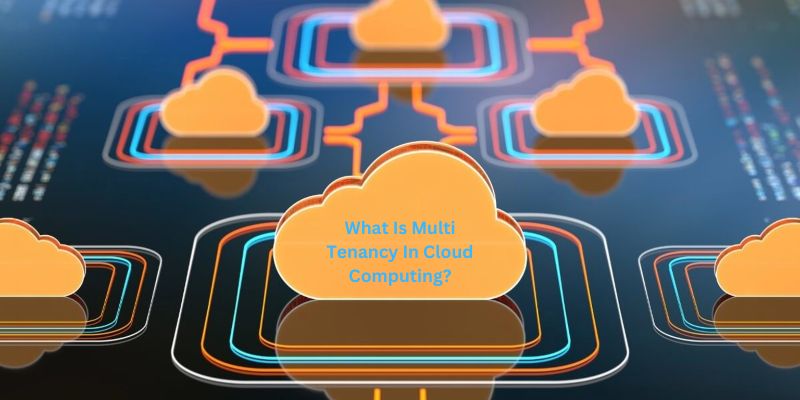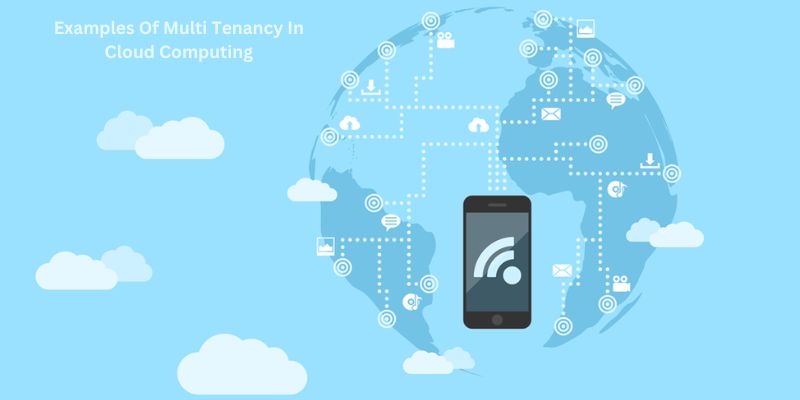The way organizations conduct their operations in today’s digital environment has been changed by cloud computing. With its numerous benefits, including scalability, flexibility, and cost-efficiency, cloud computing has become the go-to solution for organizations of all sizes. One of the key concepts in cloud computing is multi-tenancy, a term that often sparks curiosity and interest. In this blog post, newtimezz.com will delve into the intricacies of multi-tenancy in cloud computing, exploring its significance, benefits, and potential challenges. So, get ready to unravel the mysteries surrounding multi tenancy in cloud computing with some useful technology information below!
Contents
1. What Is Multi Tenancy In Cloud Computing?

The term “cloud computing” describes a system that allows users to access computer resources, storage, and processing power through the internet as needed. Pay-as-you-go services provide cost reduction, and the requirement to acquire and operate physical data centers is removed.
All company types utilize cloud computing nowadays for a variety of tasks, including email, data backup, development and testing, analytics, and disaster recovery.
A software architectural style called multitenancy allows a single program instance to serve several different user groups. It indicates that numerous users are sharing the same computer resources with cloud suppliers. Although they share the same processing resources, each Cloud customer’s data is kept separate and safe. It is an essential Cloud Computing idea.
In cloud computing, multitenancy refers to a shared host where the same resources are allocated among many clients. An architecture for cloud computing called a “multi-tenant cloud” enables users to share computer resources across a public and private cloud. Each renter’s data is kept separate and unavailable to other occupants.
2. How Does Multi Tenancy In Cloud Computing Work?
Users get personal storage space for their projects and data in a multi-tenant cloud infrastructure. In order to provide each user access to just their stored data and to provide protection from other cloud tenants, each segment of a multi-tenant cloud network requires complicated permissions. Each tenant’s data is locked up within the cloud architecture and is only reachable with the cloud provider’s authorization.
While separate people or groups within a single firm may be the clients, or tenants, of a private cloud, the server space of several organizations may be securely shared in a public cloud. The multi-tenancy concept is used by most public cloud providers. They may operate servers with just one instance, which is less expensive and speeds up updates.
3. Benefits Of Multi Tenancy In Cloud Computing

The widespread use of cloud computing is proof that multitenancy has a wide variety of benefits.
- Multiple tenants can reduce costs. Scaling computing is inexpensive, and multi-tenancy enables resource allocation that is both coherent and effective, ultimately resulting in operating cost savings. It is frequently less expensive for an individual user to pay for access to a cloud service or SaaS application than to run single-tenant gear and software.
- enables flexible multi-tenancy. If you’ve made an investment in your hardware and software, it may run at full capacity when demand is strong or remain idle when demand is low. A multitenant cloud, on the other hand, may distribute a pool of resources to users as their demands fluctuate. You can use extra capacity when necessary as a customer of a public cloud provider and avoid paying for it when you don’t.
- Efficiency may increase with multi-tenancy. The usage of multitenancy lessens the requirement for each user to oversee infrastructure management, upgrades, and maintenance. Instead of having their teams perform such mundane tasks, individual tenants may depend on a common cloud provider.
4. Disadvantage Of Multi Tenancy In Cloud Computing
- Data is kept in third-party services, which lowers its security and exposes it to danger.
- Damage to the data will result from unauthorized access.
Within the cloud architecture, each tenant’s data is not available to all other tenants and may only be accessed with the cloud provider’s authorization.
Customers, or tenants, of a private cloud may include several people or organizations who are part of the same business. Totally different businesses can safely share server space in a public cloud. The majority of public cloud service providers employ a multi-tenancy approach, which enables them to operate servers with solitary instances, which is less expensive and speeds up updates.
5. Examples Of Multi Tenancy In Cloud Computing

Multi-tenant clouds can be compared to an apartment building’s framework. Within the confines of the building’s agreement, each tenant has access to their unique flat, and only people who have been given permission to enter can do so. However, utilities like water, power, and common areas are shared by the entire structure.
In that the provider establishes general quotas, guidelines, and performance standards for clients, yet each client has exclusive access to their data, this is comparable to a multi-tenant cloud. If you are interested in similar topics, you can also refer to the article Cyber Security In Cloud Computing
Conclusion
In conclusion, multi tenancy in cloud computing offers numerous benefits for both service providers and customers. By allowing multiple users to share resources and infrastructure, it enables cost savings, improved efficiency, and scalability. Additionally, it promotes collaboration and fosters innovation by providing a platform for organizations to share and develop ideas. However, it is crucial for service providers to implement robust security measures and strict data isolation to ensure the privacy and protection of customer data.
Overall, multi-tenancy is a key element in the success of cloud computing, revolutionizing the way businesses operate and paving the way for a more interconnected and dynamic digital landscape.





